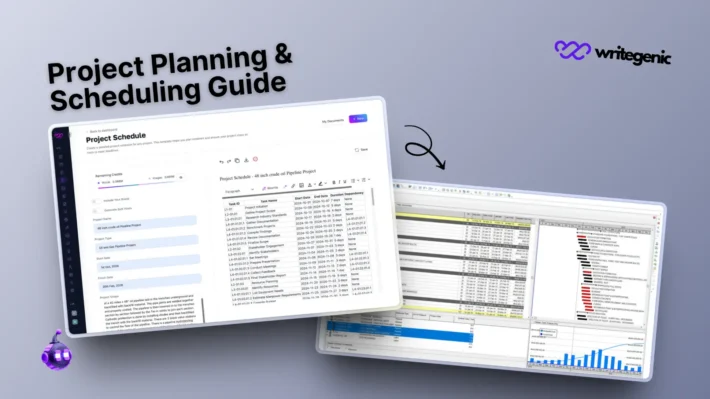Team Collaboration Plan That Actually Works: A Comprehensive Guide

An effective team collaboration plan helps you with guaranteeing that your team is collaborating properly, communicating effectively, and reaching common objectives. In a modern versatile and commonly distant working setting, teamwork is the difference between a successful project and failure. It is not merely departmentalization of work, but it is working as a team, brainstorming and it is to have a culture of trust and accountability.
This step-by-step guide will provide you with answers to what is team collaboration, best practices for team collaboration, and a few tips on collaborative teaming so that you can develop a plan on team collaboration, and achieve some real results.
Table of Contents
What Is Team Collaboration?
Team collaboration refers to the process of bringing individuals together in knowledge sharing, coordination of efforts, and the attainment of collective results. It entails good communication, clarified roles, respect, and decision making.
How It Differs from Coordination:
- Coordination: Allocation of clear and separate tasks to different people.
- Collaboration: Working together on work with constant feedback and inputs.
What Is Collaborative Teaming?
Collaborative teaming can be defined as the creation of a working environment in which other departments, skills, and role play collaboratively as a single coherent team. This can be very helpful in other professions such as healthcare, education, software development and project management where integrated knowledge produces a more desirable outcome.
Why Team Collaboration Plan Matters
The concept of collaboration has a direct influence on performance, efficiency and satisfaction within the organization. Here’s how:
1. Enhanced Problem-Solving
A diversity of a team results in different opinions, which provide creative and workable solutions.
2. Faster Project Completion
Teamwork saves on back-and-forth, eliminates duplication of work, and simplifies work.
3. Higher Engagement and Morale
Individuals get appreciated and are motivated when they have something to contribute.
4. Stronger Company Culture
When teams are engaged with each other effectively, they generate a culture of trust, responsibility, and development.
Components of an Effective Team Collaboration Plan
To develop an effective collaboration plan, you need to organize your team to work in harmony in terms of structure, tools, and expectations. These are what you should include:
1. Clear Goals and Objectives
The beginning comes with why. Make sure all people realize the goal of the project or initiative and how their reliance leads to overall success.
2. Defined Roles and Responsibilities
There should be no duplication or confusion by allocating positions. Add a RACI matrix (Responsible, Accountable, Consulted, Informed) into big projects.
3. Preferred Communication Channels
Identify tools for different types of communication:
- Slack or Teams for daily discussions
- Zoom or Meet for virtual meetings
- Email or Notion for formal updates/documentation
4. Decision-Making Processes
Clarify how decisions will be made:
- Is it democratic?
- Will team leads have final say?
- Do decisions require stakeholder sign-off?
5. Conflict Resolution Guidelines
Describe how the team members will manage the disputes. This may consist of:
- One-on-one conflict resolution steps
- Mediation by a team lead
- Escalation protocols
Best Practices for Team Collaboration
There are also best practices that will enable your plan to be effective and sustainable in terms of team collaboration, as follows:
1. Foster Open Communication
The team members should be encouraged to talk, listen and state their contributions consistently. Encourage free communication through stand-ups, feedback and retrospectives.
2. Promote Psychological Safety
Make the team members aware that they will not be punished when they report the errors of their judgment or when they inquire. This creates confidence and creativity.
3. Use the Right Tools
Choose collaboration tools that fit your workflow. For example:
- Trello or Asana for task management
- Miro for brainstorming
- Loom for async video updates
4. Create a Culture of Accountability
Keep deadlines, make inquiries and make individuals accountable. This establishes trust, and enhances production.
5. Celebrate Wins
Morale is driven through recognition. Shout-outs and rewards or virtual celebrations are a great way to celebrate small and big milestones.
Tools to Improve Team Collaboration
The tools are the infrastructure of your collaboration plan. Make smart decisions depending on the size of your team, the complexity of your project and communication style.
Top Collaboration Tools:
- Slack – Real time messaging and work tool incorporation
- Microsoft Teams – Communicate the entire way via office 365 synching
- Asana – Monitor project deadlines, allocate work, and see an overview of the progress
- Miro – Visual collaboration board of brainstorming and mapping
- Notion – Notion is a central location of notes, wikis, and databases
- Writegenic AI – AI-powered assistant for generating meeting notes, project documentation, and collaborative content in real time
Collaborative Teaming in Action
Scenario: A marketing team collaborates with sales, design, and product in order to launch a new campaign.
- Design shares mockups in Figma
- Marketing drafts messaging in Notion and schedules posts in Buffer
- Product aligns the launch with release updates
- Sales provides feedback from customers
Result: Consistent syncs weekly, common dashboards, and feedback create a consistent, on-brand campaign on schedule-with attributable results.
Such collaborative teaming creates cross-functional solidification and enhances innovation across the departments.
Tips for Remote and Hybrid Team Collaboration
Remote and hybrid work come to us with new challenges, but with deliberate preparation, collaboration can work.
Remote Collaboration Tips:
- Define Work Hours: Staff must avoid burnout and improve hand-offs by specifying availability.
- Encourage Video-On Meetings: There is nothing like a face-to-face connection to establish a rapport and avoid miscommunication.
- Mix Sync and Async Work: Utilize async tools, such as Loom, Notion and Google Docs, as a way of giving updates, and sync meetings as a way of making decisions.
Hybrid Collaboration Tips:
- Make Meetings Inclusive: Implement remote working by using virtual whiteboards and sharing screens to make remote employees feel part of things.
- Standardize Documentation: Update and maintain all team resources in a shared knowledge base such as Notion.
Common Pitfalls and How to Avoid Them
Lack of Clarity
All projects begin with a written plan and scope. Get on the same page.
Tool Overload
Automate your technology stack. Audit tools after every 3 months to eliminate any redundancies.
Uneven Participation
Allocate some action items to every member, require turn taking at meetings, and rotation of duties.
Unresolved Conflicts
Train team leaders on how to resolve conflict and incorporate the conflict pathways in your collaboration plan.
Conclusion
Collaboration in a team is not a thing done only once when you enter a team, it is a continuous process and it develops as time goes along with your team dynamics, tools and intentions. With this knowledge of team collaboration, structured planning, use of tools and communication habits, and promotion of positive team culture, your team will be prepared in a better way to transform, adjust, and thrive.
Build your effective team collaboration plan now-and transform teamwork into a strategic weapon.
FAQs
Why is a Team Collaboration Plan important in project management?
A Team Collaboration Plan is useful since it facilitates effective communication, minimizes the risks of misunderstanding, and helps to increase the general productivity. It brings all team members into alignment in regards to goals, decision-making process as well as tools critical in successful project delivery.
How does a Team Collaboration Plan benefit remote teams?
In case of remote working teams, a Team Collaboration plan helps everyone to be connected, stay on track, and to perform accountability irrespective of physical locations. It contains virtual meeting time, ideal communication platforms, and document sharing platforms.
How often should a Team Collaboration Plan be reviewed?
Revising your Team Collaboration Plan is a good idea at the beginning or a project phase or within the quarter in an established team. Periodic reviews can assist you in taking an adjustment to new tools, changes in team members or changes in workflow.
Can a Team Collaboration Plan improve team performance?
That is true, and a properly made Team Collaboration Plan definitely leads to better performance as it invites the elements of transparency, the reduction of misunderstanding and proactive communication. Reasoned teams usually perform better work quickly.


